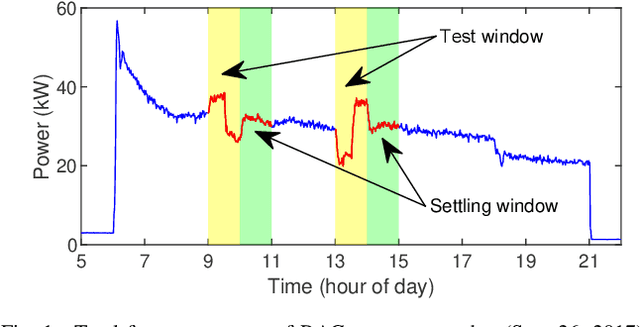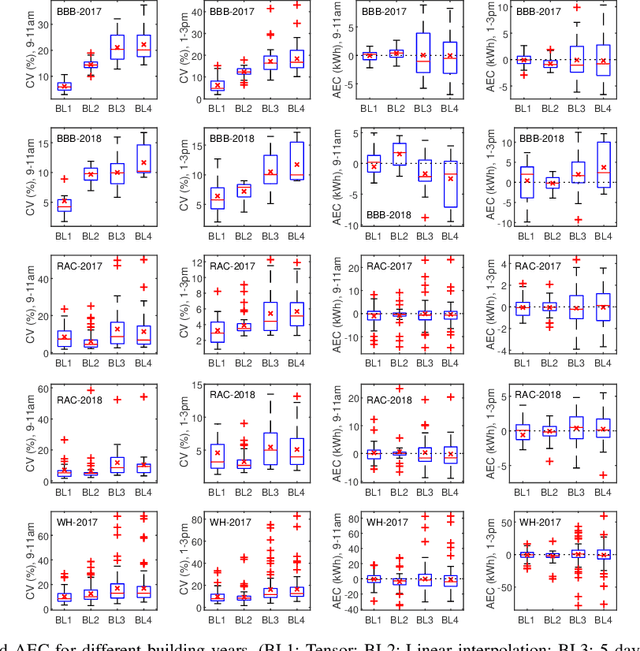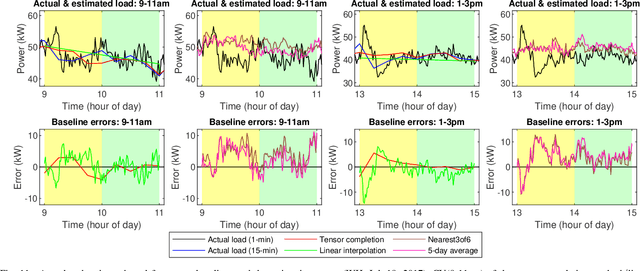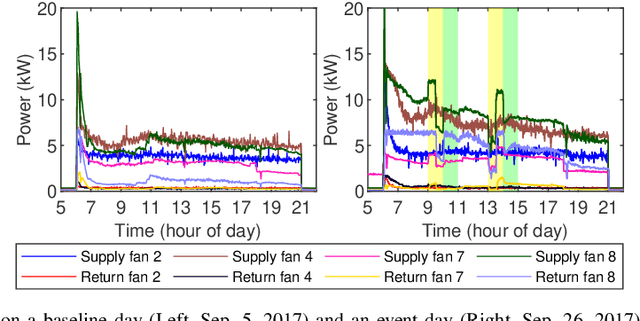Johanna L. Mathieu
Baseline Estimation of Commercial Building HVAC Fan Power Using Tensor Completion
Apr 24, 2020



Abstract:Commercial building heating, ventilation, and air conditioning (HVAC) systems have been studied for providing ancillary services to power grids via demand response (DR). One critical issue is to estimate the counterfactual baseline power consumption that would have prevailed without DR. Baseline methods have been developed based on whole building electric load profiles. New methods are necessary to estimate the baseline power consumption of HVAC sub-components (e.g., supply and return fans), which have different characteristics compared to that of the whole building. Tensor completion can estimate the unobserved entries of multi-dimensional tensors describing complex data sets. It exploits high-dimensional data to capture granular insights into the problem. This paper proposes to use it for baselining HVAC fan power, by utilizing its capability of capturing dominant fan power patterns. The tensor completion method is evaluated using HVAC fan power data from several buildings at the University of Michigan, and compared with several existing methods. The tensor completion method generally outperforms the benchmarks.
Real-Time Energy Disaggregation of a Distribution Feeder's Demand Using Online Learning
May 04, 2018



Abstract:Though distribution system operators have been adding more sensors to their networks, they still often lack an accurate real-time picture of the behavior of distributed energy resources such as demand responsive electric loads and residential solar generation. Such information could improve system reliability, economic efficiency, and environmental impact. Rather than installing additional, costly sensing and communication infrastructure to obtain additional real-time information, it may be possible to use existing sensing capabilities and leverage knowledge about the system to reduce the need for new infrastructure. In this paper, we disaggregate a distribution feeder's demand measurements into: 1) the demand of a population of air conditioners, and 2) the demand of the remaining loads connected to the feeder. We use an online learning algorithm, Dynamic Fixed Share (DFS), that uses the real-time distribution feeder measurements as well as models generated from historical building- and device-level data. We develop two implementations of the algorithm and conduct case studies using real demand data from households and commercial buildings to investigate the effectiveness of the algorithm. The case studies demonstrate that DFS can effectively perform online disaggregation and the choice and construction of models included in the algorithm affects its accuracy, which is comparable to that of a set of Kalman filters.
 Add to Chrome
Add to Chrome Add to Firefox
Add to Firefox Add to Edge
Add to Edge